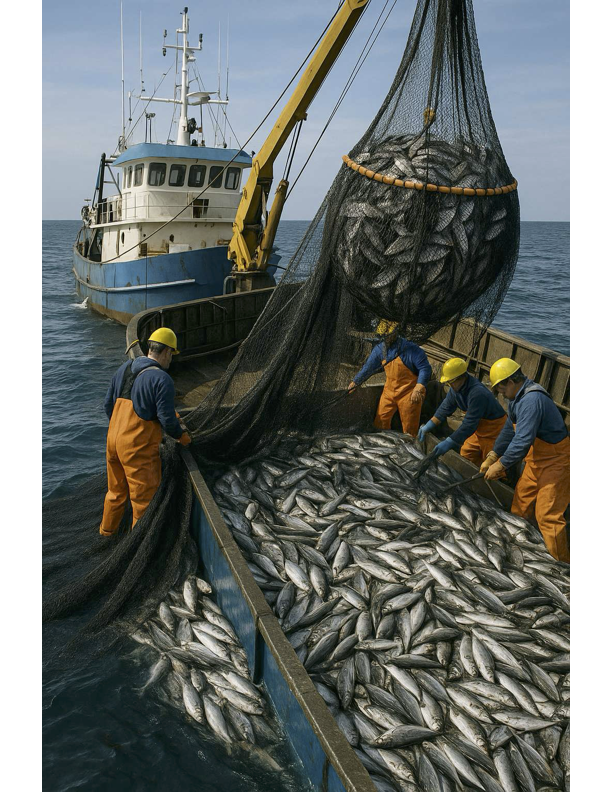The fishing industry feeds over three billion people and employs nearly 60 million. It’s ancient, vast, and crucial — but it's also at a breaking point.
The Big Picture
Commercial fishing isn't just about boats and nets. It's a $400+ billion global machine that stretches from small coastal towns to high-tech factory trawlers roaming international waters. It covers wild capture fisheries and aquaculture (farmed fish), with demand climbing every year — especially for species like tuna, salmon, and shrimp.
But here's the catch: the ocean can't keep up.
Overfished and Underprotected
One-third of global fish stocks are overfished. That means we’re pulling out more than nature can replace. Illegal, unreported, and unregulated (IUU) fishing makes things worse, costing up to $23 billion annually and threatening both marine ecosystems and legitimate fishermen’s livelihoods.
Bottom trawling — dragging massive nets across the seafloor — destroys habitats. Bycatch (accidental catch of non-target species like dolphins, turtles, and juvenile fish) adds to the environmental cost. The industry is pulling up protein, yes — but also dragging down biodiversity.
Fish Farms: Savior or Problem in Disguise?
To meet demand, fish farming (aquaculture) has exploded. It now supplies over half the fish we eat. It’s efficient, scalable, and in theory, sustainable. But in practice? Not always.
Many fish farms suffer from overcrowding, pollution, disease outbreaks, and reliance on wild-caught fish for feed. Poorly managed operations can damage local ecosystems just as much as overfishing does.
Who’s Paying the Price?
The environmental toll is just part of it. Many workers in the global seafood supply chain face unsafe conditions, long hours, and in some cases, outright forced labor. A 2023 study found forced labor indicators in nearly half the fishing vessels surveyed across major regions.
If you're eating cheap shrimp, someone else might be paying the real cost.
The Future of Fish
There’s hope — but it takes action.
Sustainable certifications (like MSC and ASC), stricter regulations, better data tracking, and consumer pressure are nudging the industry toward reform. Innovations like AI-powered fishing monitors, land-based aquaculture, and cell-cultured seafood are on the rise.
But no tech can fix a broken system alone. Governments need to enforce fishing limits. Corporations need to own their supply chains. And consumers? We need to ask where our fish comes from — and how it got to our plates.
Bottom Line
The fishing industry isn’t just feeding the world. It’s shaping the future of our oceans, our climate, and our global economy. If we want to keep eating fish tomorrow, we need to fish smarter today.

